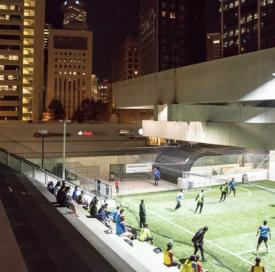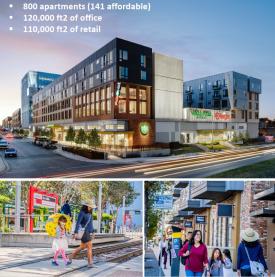Transit-Oriented Development

What’s New
- On October 31, 2024, FTA announced the award of approximately $10.5 million to 11 projects in 10 states in FY24 TOD planning grants to support community efforts to improve access to public transportation. The grants help organizations plan for transportation projects that connect communities and improve access to transit and affordable housing.
- Recent changes in the law now allow transit agencies to repurpose qualified properties for transit-oriented development and affordable housing projects. Learn more in the FTA’s interim guidance. FTA hosted a webinar about the Asset Disposition Guidance on January 31, 2024, and February 8, 2024.
- View the webinar presentation.
- Listen to the recording (Passcode: .kf5HA^*)
- On May 23, 2024, FTA announced the availability of approximately $10.5 million in competitive grants for the Fiscal Year 2024 Pilot Program for Transit-Oriented Development Planning Program. FTA extended the deadline for applications to August 2, 2024.This year, applications with a substantial focus on affordable housing may receive 100% federal support. On June 5th, FTA hosted a webinar about this funding opportunity.
- View the presentation.
- Listen to the recording (Passcode: vam^2rv%)
- FTA is highlighting how communities across the country are creating housing, recreational and commercial opportunities around bus and rail stops, also known as Transit Oriented Development (TOD). These examples demonstrate how transit serves as a lifeline to jobs and opportunities that improve communities and people’s lives. Follow along at #TODChangesLives
- USDOT’s TIFIA and RRIF programs provide loans for TOD and transit projects.
- See FTA-funded TOD planning projects, sorted by state.
Transit-Oriented Development at Work
|
 |
|
 |
Overview
The success of transit systems in rural, urban and suburban neighborhoods is critical to the economic health and sustainable growth of America’s communities. Transit systems should address the needs of everyone and help people get to jobs, school, healthcare and visit friends and family. Transit-oriented development (TOD) is where those two areas intersect to create real change.
Dense, walkable, mixed-use development near transit attracts people and adds to vibrant, connected communities. Public transportation can help foster partnerships in communities that support the development of affordable housing around transit.
Learn more about FTA’s Pilot Program for TOD Planning, which provides funding to communities to integrate land use and transportation planning with a new transit project.
Successful TOD leverages public investments in transit to promote:
| Neighborhood revitalization | |
| More affordable housing | |
| Public- and private investment | |
| Economic returns to surrounding landowners and businesses | |
| Increased ridership for transit systems | |
| Congestion relief and improved air quality | |
| Improved safety for pedestrians and cyclists. |
Since 2015, FTA’s TOD program has provided more than $90 million to help communities around the country plan for new opportunities around transit.
| Program | FAST Act 2016-2020 | Current Funding under IIJA 2022-2026 | % Increase |
|---|---|---|---|
| FTA TOD Planning Program | $50 million | $68.9 million | 38% over 5 years |
| Metropolitan & Statewide Planning | $681 million | $966 million | 41% over 5 years |
